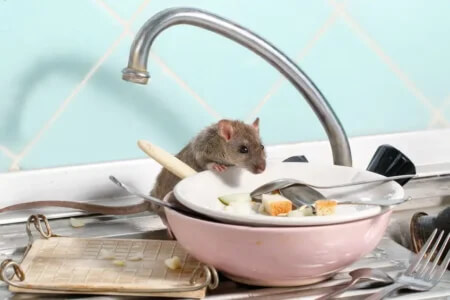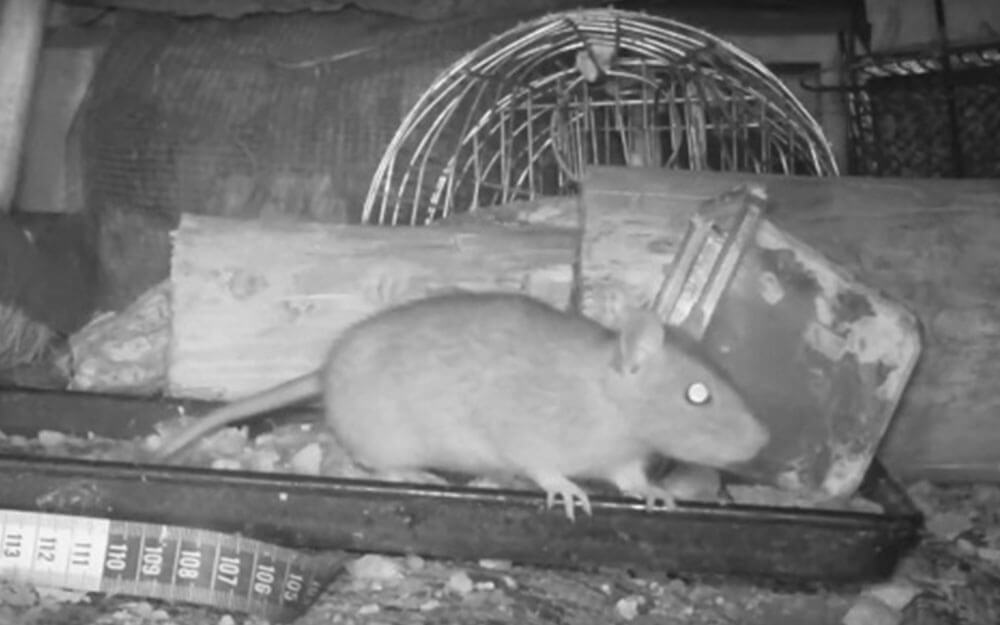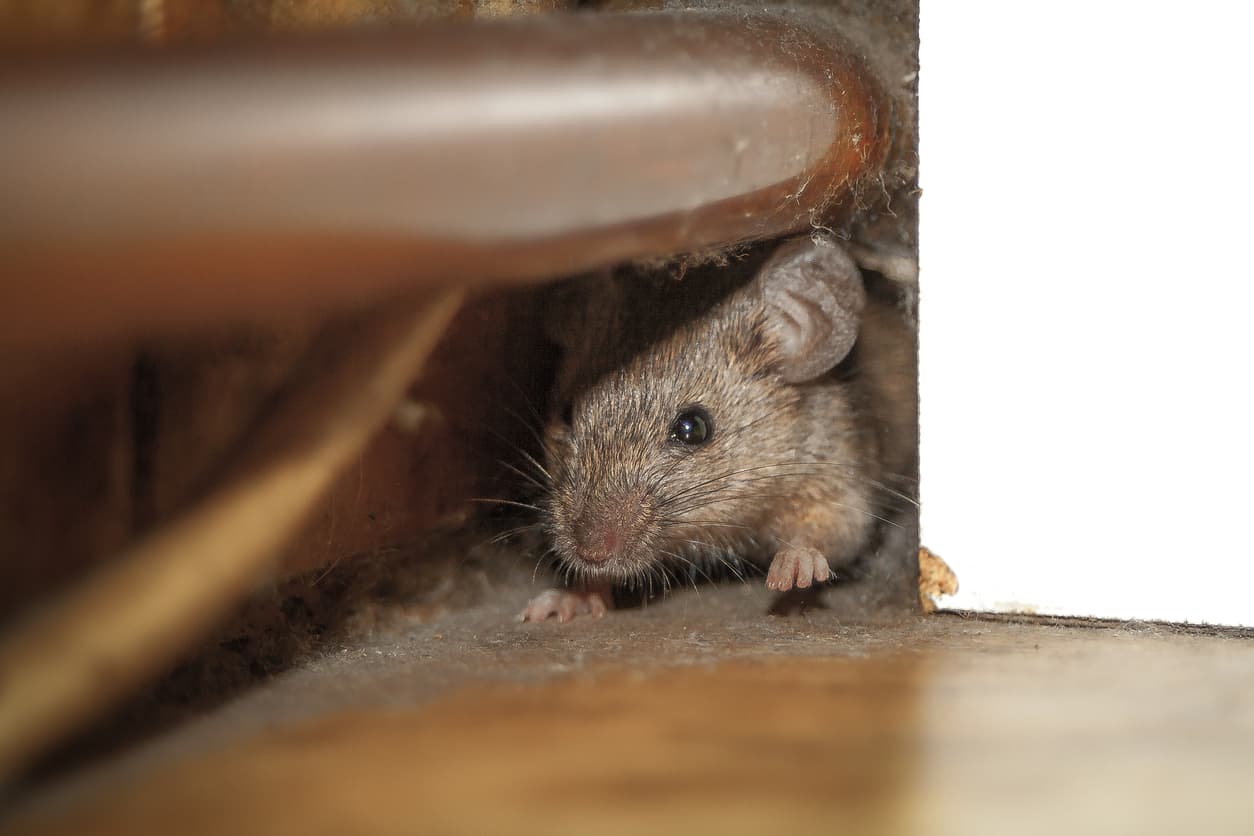What to Do If a Rat is in Your House?

Identifying the rat Problem
Identifying and addressing a rat problem requires a keen eye for specific signs and a comprehensive understanding of distinguishing features. Here's a guide to help you pinpoint and assess the severity of a potential rat infestation:
Signs of a Rat Infestation:
- Droppings: Look for small, dark pellets resembling grains of rice.
- Gnaw Marks: Rats have a compulsive need to chew, leaving behind noticeable marks on various materials.
- Greasy Smears: Rats' fur contains natural oils, resulting in greasy marks along their frequently traveled paths.
- Musky Odor: A distinctive, unpleasant scent may indicate the presence of rats.
- Disturbed Food Sources: Rats often leave a mess when foraging for food, including torn packaging and scattered crumbs.
- Sightings: Actual visual confirmation of a rat in or around your property.
Distinguishing Rats from Mice:
- Size: Rats are generally larger than mice, with a more robust and sturdy build.
- Tail Length: Rats typically have longer tails compared to mice.
- Droppings: While both leave droppings, rat droppings are larger and more oval-shaped.
- Behavior: Rats tend to be bolder and more vocal compared to their smaller counterparts.
Assessing the Severity:
- One Sighting vs. Multiple Signs: A single rat sighting may not necessarily indicate a full infestation. However, it's crucial to investigate further.
- Evidence of a Nest: Discovering a rat nest or nesting materials signifies a more advanced and established infestation.
- Multiple Signs: If you observe a combination of droppings, gnaw marks, greasy smears, and a musky odor, it suggests a higher likelihood of a severe rat problem.

Taking Control for Rat Problems
Safety First
- Wear protective gloves to prevent direct contact with rats or their droppings.
- Use a mask to reduce the risk of inhaling dust or contaminants.
Sealing Entry Points
Inspection:
- Examine areas around pipes, windows, doors, and foundations for potential entry points.
- Identify gaps or holes that rats may use to enter the premises.
Materials:
- Utilize caulk, steel wool, or other rodent-proof materials to seal openings.
- Ensure a thorough and secure closure to prevent re-entry.
Food and Water Elimination
Storage:
- Store food in airtight containers to deny access to rats.
- Keep pet food in sealed containers as well.
Cleanup:
- Promptly clean up spills to eliminate potential food sources.
- Regularly dispose of trash and keep bins tightly closed.
Water Sources:
- Fix leaky faucets promptly.
- Empty and clean pet water bowls nightly.
Trapping Techniques
Humane Traps:
- Choose traps suitable for the size and severity of the infestation.
- Opt for traps that allow for live capture without harming the rat.
Baiting:
- Use tempting treats such as peanut butter or chocolate to lure rats into traps.
- Ensure baits are securely placed within the traps.
Placement:
- Strategically place traps along walls and in dark corners where rats are likely to travel.
- Consider high-activity areas for effective trapping.
Disposal:
- Handle trapped rats with care and hygiene.
- Use gloves and follow recommended disposal procedures to minimize health risks.
By following these steps, you can take control of rat problems effectively and maintain a safe and sanitary environment.
Prevention is Key for Rat Problem

1. Maintaining Hygiene
- Regularly clean trash cans, compost bins, and pet areas to eliminate attractants.
- Dispose of garbage properly to prevent odors that might attract rats.
2. Proper Food Storage
- Keep pantry items in sealed containers to prevent easy access for rats.
- Avoid leaving food scraps accessible; use covered trash bins.
3. Eliminating Hiding Places
- Declutter attics, basements, and garages to reduce potential nesting areas.
- Seal any cracks or openings in walls to limit entry points for rats.
Seeking Professional Help for Rodents
Reasons to Seek Professional Assistance:
Large Infestations: When the rodent problem becomes too extensive for DIY methods to effectively manage.
Difficulty Locating Entry Points: Professional exterminators can conduct thorough inspections to identify and seal entry points that may be challenging for homeowners to find.
Concerns about Handling Dead Rats: Dealing with deceased rodents can pose health risks. Professionals are equipped to handle the safe removal and disposal of rodent carcasses.
Choosing a Reputable Exterminator
When considering professional help, it's crucial to choose a reputable exterminator. Here's a guide:
1. Research Credentials:
- Look for certifications and memberships in pest control associations.
- Verify the company's reputation through online reviews and testimonials.
2. Licensing:
- Ensure the exterminator is licensed to operate in your area.
- Check if they adhere to industry standards and regulations.
3. Methods Used:
- Inquire about the techniques and products the exterminator employs.
- Choose eco-friendly options if environmental impact is a concern.
4. Cost Estimate:
- Request a detailed cost estimate, including any potential additional charges.
- Compare quotes from multiple companies to ensure a fair price.
5. Guarantee/Warranty:
- Inquire about guarantees or warranties on their services.
- Understand the terms and conditions of any provided warranty.
6. Communication:
- Assess the responsiveness and clarity of communication from the exterminator.
- Choose a professional who is transparent about the process and expectations.
7. Customer Service:
- Consider the level of customer service provided.
- A reputable exterminator should be willing to address your concerns and provide ongoing support.
By following these guidelines, you can make an informed decision when seeking professional help for rodent-related issues.
Living Rat-Free
Long-Term Prevention Strategies
Maintain Good Hygiene:
- Keep living spaces clean and clutter-free.
- Regularly sweep and mop floors to remove crumbs and spills.
- Seal food in airtight containers to eliminate potential attractants.
Eliminate Attractants:
- Dispose of garbage regularly, ensuring bins are sealed tightly.
- Repair any leaks promptly to remove water sources.
- Trim vegetation and eliminate debris around the house to reduce hiding spots.
Regularly Inspect for Signs of Activity:
- Check for droppings, gnaw marks, and nesting materials.
- Seal any entry points, such as gaps or cracks in walls, to prevent access.
- Use traps and baits strategically as a preventive measure.
Peace of Mind
Enjoy Your Home:
- Relax knowing you have implemented effective rodent prevention measures.
- Experience a clean and hygienic living environment without the worry of rat infestations.
Confidence in Your Efforts:
- Take pride in your proactive approach to maintaining a rat-free home.
- Feel confident that you are protecting your property and the well-being of your family.
Key Steps to remember
Stay Calm: Maintain a composed demeanor to make rational decisions and address the issue efficiently.
Identify Entry Points: Locate and seal any potential entry points to prevent more rats from entering your home.
Clean and Declutter: Eliminate potential food sources and hiding spots by keeping your living space clean and organized.
Set Traps: Use traps strategically to catch and remove rats from your home. Consider humane options if you prefer.
Consult Professionals: If the infestation is severe or persistent, seeking professional pest control services may be necessary.
Practice Prevention: Implement long-term prevention measures, such as proper waste disposal, sealing cracks, and maintaining a clean environment.
Monitor and Evaluate: Keep an eye on the situation, and if necessary, adjust your approach based on the effectiveness of your chosen methods.
Conclusion
In conclusion, discovering a rat in your house can be a distressing experience, but it's essential to address the situation promptly and effectively. By following the steps outlined in this guide, you can create a comprehensive plan to handle the issue and prevent future infestations.
By combining these steps, you increase the likelihood of successfully dealing with a rat in your house and preventing future occurrences. Remember, persistence and consistency are key when it comes to pest control. Whether you choose to tackle the issue independently or enlist professional help, taking proactive measures will contribute to a rat-free and comfortable living environment. Don't hesitate to adapt and refine your strategy as needed, and always prioritize the well-being and safety of your household.
